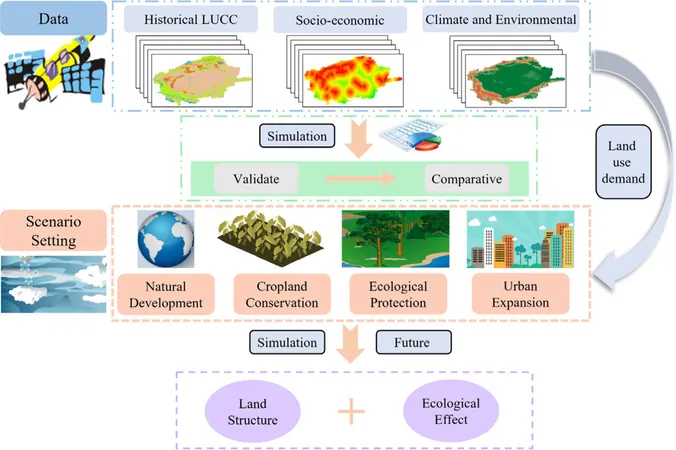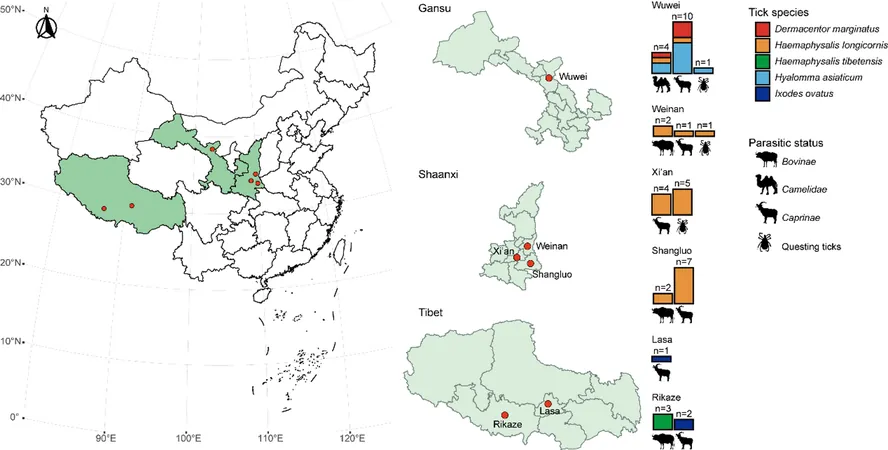
Revolutionary Study Unveils Land-Use Transformation in China's Tarim River Basin
2025-05-22
Author: Rajesh
Groundbreaking Research Uncovers Ecological Shifts
A visionary study spearheaded by Prof. Chen Yaning at the Xinjiang Institute of Ecology and Geography has spotlighted the dramatic impact of land-use changes on the ecological landscape of the Tarim River Basin, China's largest inland river system. This pivotal research, featured in the reputable journal Geography and Sustainability, is reshaping our understanding of the region.
Decades of Change: A Closer Look at Land Use
By harnessing a wealth of remote sensing, meteorological, and socioeconomic data, the team meticulously scrutinized land-use transitions over the past three decades. Their findings reveal a striking transformation from 1992 to 2020: cropland has swelled by approximately 18,851 km² (a staggering 56.13%), while grasslands and woodlands have also gained ground, increasing by 10,235 km² and 1,015 km², respectively. Meanwhile, barren lands have shrunk by around 20,597 km².
A Bright Future: Projecting Ecological Outcomes
The researchers didn't stop at analyzing past trends; they also forecasted future land patterns and ecological outcomes using the innovative Patch-generating Land-Use Simulation (PLUS) model. They developed four hypothetical scenarios—Natural Development, Cropland Conservation, Ecological Protection, and Urban Expansion—to explore the potential trajectory of land use in the basin.
Ecological Protection: A Path to Revival
Under the Ecological Protection scenario, predictions for 2050 are optimistic: grasslands, forests, and water bodies are expected to surge by 20,375 km², 2,635 km², and 586 km², respectively. This scenario promises significant ecological enhancements and restoration.
Transforming Barren Lands: The Key to Improvement
Across all scenarios examined in the study, converting barren lands into productive grasslands and woodlands emerged as the crucial factor driving ecological improvement. This transformation is set to bolster vital ecosystem services including water conservation, soil preservation, and the maintenance of biodiversity.
Conclusion: A Blueprint for Sustainability
This enlightening study not only sheds light on the recent land-use dynamics within the Tarim River Basin but also lays a scientifically-backed foundation for sustainable socio-economic progress and ecological conservation initiatives in the region. The findings hold significant implications for policymakers striving to balance development with environmental stewardship.




 Brasil (PT)
Brasil (PT)
 Canada (EN)
Canada (EN)
 Chile (ES)
Chile (ES)
 Česko (CS)
Česko (CS)
 대한민국 (KO)
대한민국 (KO)
 España (ES)
España (ES)
 France (FR)
France (FR)
 Hong Kong (EN)
Hong Kong (EN)
 Italia (IT)
Italia (IT)
 日本 (JA)
日本 (JA)
 Magyarország (HU)
Magyarország (HU)
 Norge (NO)
Norge (NO)
 Polska (PL)
Polska (PL)
 Schweiz (DE)
Schweiz (DE)
 Singapore (EN)
Singapore (EN)
 Sverige (SV)
Sverige (SV)
 Suomi (FI)
Suomi (FI)
 Türkiye (TR)
Türkiye (TR)
 الإمارات العربية المتحدة (AR)
الإمارات العربية المتحدة (AR)